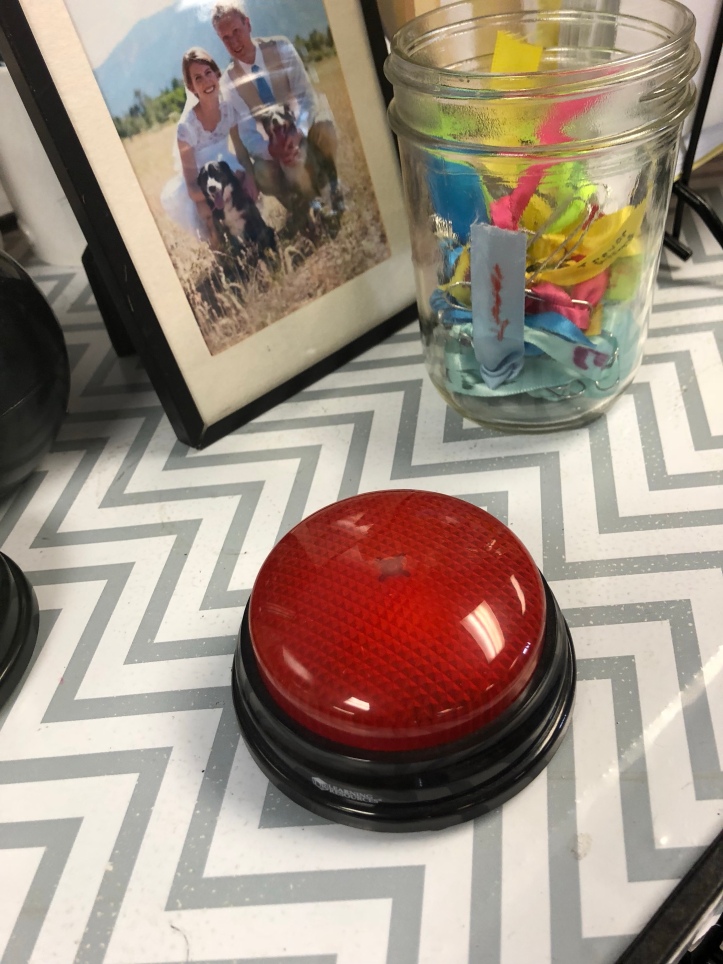We know that Comprehensible Input is the essential ingredient for language acquisition. But how do you know you’re being comprehensible? How do you know if the 30+ kiddos facing you are picking up what you’re laying down? What if they’re nodding politely and thinking, “I have no idea what’s going on”? What if what we think is “Comprehensible Input” is just noise?! This question was recently posted on the iFLT/NTPRS/CI Teaching FaceBook group and I’ve been mulling it for the past few days. (By the way, if you are not a member of that group, drop everything and join. It’s an incredible resource!) I don’t have the silver bullet solution but here are a few things I’ve found helpful when I’m talking to my little darlings in Spanish. If you’ve been in the CI game for a while, you probably won’t read anything new here. I won’t be offended if you stop reading and go watch some cute cat videos on YouTube. No judgement here.
Expectation: Like any other classroom behavior, we have to teach our kiddos what we want them to do. And for a lot of kids, we’re asking them to do the opposite of what they’ve been trained to do: sit quietly and do their work. I think for a lot of ours, they’ve spent years sitting at desks staring blankly ahead without having to do much heavy lifting upstairs, if you know what I mean. As long as they’re not being obnoxious or poking the kid next to them, they can pretty much take a short vacation to LaLa Land. We have to retrain them: in language class things are different. We want their brains turned on and awake. We want them listening carefully to our messages and taking in all our clues to help them make meaning in new languages. This is much harder work than students expect and it doesn’t come naturally to most so we have to train them and remind them and remind them and remind them again of what we expect them to do in our classes. In my classes, I repeat the following instructions often, probably every class.
- “Signal when Mrs. Chase is unclear”
- “Show me with your eyes that you’re with me”
Neither of these are new ideas: they’ve been pillars of CI Instruction from the very beginning, but they’re so important that they’re worth re exploring.
Signal Mrs. Chase when she is unclear– I used to tell my kiddos, signal me when you don’t understand. And you know who would signal me? The smart, confident, high flyer kids…and no one else. Those were the kids who would punch their fist to tell me they didn’t catch what I said. The fabulous Rita Barrett, CI teacher extraordinaire in Portland, told me she changed her expectation to “Signal when Profe is unclear”. Hello! How brilliant is that?! Who’s fault is it if they’re not understanding? It’s mine, the teacher’s fault! My job is to give them a message they can understand…Help me out kids-If I am being unclear, stop me! Signal me! Help me be a better teacher! Changing the perspective is a game changer. It takes the pressure off them. It is the teacher’s responsibility to be comprehensible and I am asking my little darlings to help me. Not the other way around.
I train my kiddos to punch their fist into their palm when I am unclear…and sometimes I test them to make sure they’re doing it. Sometimes I’ll just throw out an impressive line in French or Japanese just to see who signals me. And I’ll make a big deal about it! That was a test and you passed! YES! You signaled Mrs. Chase when she was unclear! High fives all around. I also train my kiddos to punch their fist into their hand if they see any of their classmates signaling me. I tell them “I might not see just one person signaling – if you see someone signal, signal me too”. Not only does it lessen the fear/embarrassment of signaling, it also adds a really cool “we’re in this together” vibe.

Teach to their eyes: Like signaling, this is another key component since the Dawn of Time, I think attributed to the Famous and Amazing Susie Gross. Watch their eyes… You can see who’s tracking with you, who laughs at the right time, who is totally disengaged and set up camp in LaLa Land. You can see understanding dancing in their eyes, or looks of confusion or sheer terror. Slow down and really look into their eyes while you’re talking to them. Way too many teachers teach right over their heads to the back wall. Don’t be that guy. When you point to a word and translation on the board, look at their eyes…did they follow you? When you asked a question, did they answer without hesitation? When you made a lame joke in Spanish did they roll their eyes and groan? When you move from one side of the classroom to another…did their eyes move with you? When you asked them to vote, and you gave them two options, did they pick one or the other? If the answer is no, it’s probably because they didn’t understand you. Go back. Repeat yourself more slowly. Leave no soldier behind.
Magic Cards: In a perfect world, they signal you and you watch their eyes, and it’s a perfect little love fest of free flowing CI. They’re acquiring language by leaps and bounds and you can almost feel the unicorns frolicking over the rainbows. But…in my classes sometimes my little darlings don’t do what I want them to do. (Shocking!) Sometimes I remind them to turn their brains on and to signal me when I’m unclear, but they don’t do it! (Inconceivable!) It might just be me in my class but maybe you have some of the same little darlings that need a bit more…ahem…encouragement to stay engaged. I use my magic cards nearly every class, nearly every activity. To tell you the truth, they’re in my hands more often than not, ready for me to draw another card to ask a student for a quick translation. Not only does it help me gauge comprehension it adds just enough accountability to motivate students to signal me before I draw their card.
Any hesitation? Listen for their responses: When I’m not using my cards to ask individual students a question, I ask a lot of whole class questions…to which I expect whole class answers. Those whole class answers give me a lot of information…if they answer right away, confidently in unison, it tells me that they’re tracking with me and they’re understanding the message. When I ask a question and I can practically hear crickets, it’s a safe bet they’re not understanding me. When I ask a whole class question and only 4 or 5 kids answer, that’s harder to interpret: do they not understand…or are they not participating? That’s when I’ll pause, switch into English and remind them of my expectations. Hey chicos, when I ask a question to the whole class…who do you think I want to answer? Yes, the whole class. That’s 32 voices…because when I don’t hear 32 voices I don’t know if I’m not being clear or if you’re just not feeling like participating. If I am unclear, please stop me. If you understand, I need you to join the party. Let’s try that again.
Tell your partner: Often, rather than calling a card, I’ll say something like “Tell your partner why that was hilarious” or “Tell your buddy what the situation is” or “Tell your partner what we just found out about So and So”. It’s a quick, low stress way to make sure that if someone isn’t catching what’s going on, their partner is able to clue them in. It’s like saying we want you to be on the inside of this joke. We want you to be a part of our party. We don’t want to leave anyone out. And I stand strategically next to a student I’m not sure if following to eavesdrop.

Slow down, Señora Chase: This one is the hardest for me! Our little darlings need us to go R E A L L Y S L O W but I get so excited when I teach and when I get excited I talk reallyreallyfast. Like qualifying in the Olympic Sprint Trials Fast. My High Flyers can keep up with me but everyone else gets left in the dust. I know I need to slow down and I need my little darlings to help me out! I used to ask my kiddos to signal me when I talk to fast but now we do something much more fun. I got this I got this awesome set of buzzers on Amazon and one of them makes a siren noise. Now I pick a lucky kid to play cop, and s/he is in charge of “pulling me over” for speeding by pressing the siren buzzer. It’s fun for them, because, hello, who doesn’t LOVE sound effects? And it is a super helpful reminder for me to S L O W D O W N!
That’s it! That’s all my thoughts for the night! What else would you add to the list? How do you know that your little darlings’ lights are on upstairs?

[…] learners. This post is so good! Go ahead, read it. I’ll wait for you to come back 🙂 And how do you know if your input is comprehensible? If they’re actually picking up what you’re laying down? Wow, you ask great […]
LikeLike
[…] input…Choose a picture you want to talk about…then talk about it in slow, comprehensible language. Ask questions. Elicit their opinions. Since my Spanish 1s are kinda squirrley I incorporated […]
LikeLike
[…] How do you know if you’re comprehensible? […]
LikeLike
[…] How do you know if you’re comprehensible? […]
LikeLike
[…] what we’re talking to them about. The what isn’t nearly as important as the how…it matters that we’re talking to them in a way they can understand. If you’ve been hanging out for a while, you’ve seen this message over and over. […]
LikeLike